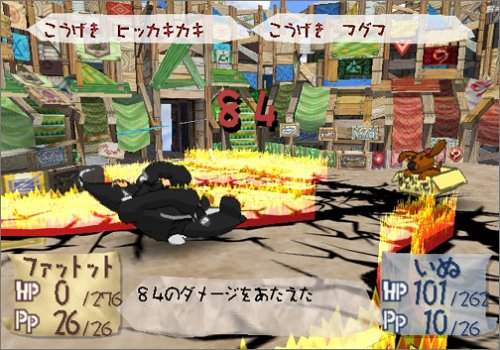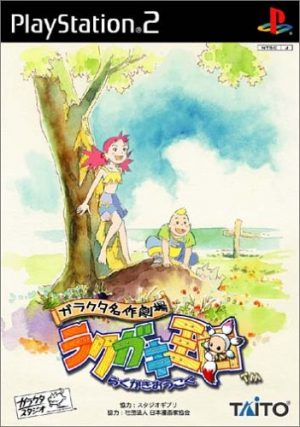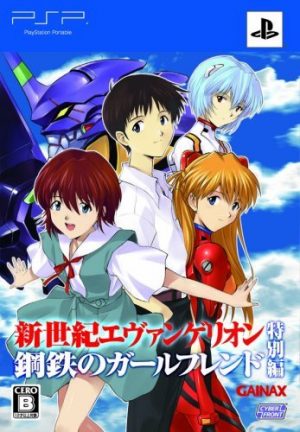
Arguably the most well-known anime studio of all time, Studio Ghibli’s beautiful animation and rich storytelling from legendary directors like Isao Takahata and Hayao Miyazaki have certainly left their mark in the anime world, but the famous company’s output aren’t strictly films. Along with commercials, special shorts, and a TV series, Studio Ghibli has also been involved in a handful of another of Japan’s big media exports: video games! In this piece, we’ll be going through all of these games chronologically, explaining the basics of each title and talking about what makes them special because of Ghibli. Let’s go!
5. Tamamayu Monogatari (Jade Cocoon: Story of the Tamamayu)

- System: PlayStation
- Publisher: Genki (JP) Crave Entertainment (WW)
- Developer: Genki
- Release Dates: JP: December 3, 1998 NA: July 29, 1999 EU: July 25, 2000
In the wake of Pokémon, the late 90s and early aughts saw a boom of monster collection RPGs, each trying to put their own spin on the genre. One of the most unique and creative of these was Jade Cocoon: Story of the Tamamayu, developed by relatively obscure studio Genki, perhaps best known for their racing games like Tokyo Xtreme Racer.
In Jade Cocoon, you play as a young boy named Levant who is set to become the next Cocoon Master of his tribal village, the only humans which can capture the numerous, mostly insect-like monsters that live in the gigantic forest surrounding them. After an attack by demons that petrifies almost everyone with a deadly curse, Levant must search the depths of the forest for a mystical herb to cure them with the help of his new bride Mahbu, who has the ability to purify captured monsters to fight by his side. Gameplay revolves around fighting, capturing, breeding, and merging these monsters together in turn-based, rock-paper-scissors-esque elemental combat.
Legendary artist, character designer, animator and frequent Ghibli collaborator Katsuya Kondō (Kiki's Delivery Service, Ocean Waves, etc.) was heavily involved with the game’s art direction and animation, breathing life into the strange world of Jade Cocoon that has a feeling and style similar to Nausicaä of the Valley of the Wind and Princess Mononoke.
With deep monster breeding and fusion mechanics (that actually combine to create visually distinct creatures, might we add) and full-motion anime cutscenes from studio Ghibli itself, Jade Cocoon remains a fascinating addition to the studio’s legacy in video games. All of this also carries forward to the PlayStation 2 sequel, Jade Cocoon 2, set 100 years after the events in the original, which further refined gameplay, had even more cutscenes, and a fully 3D world.
4. Rakugaki Ōkoku (Magic Pengel: The Quest for Color)

- System: PlayStation 2
- Publisher: Taito (JP) Agetec (NA)
- Developer: Garakuda-Studio, Taito
- Release Dates: JP: March 20, 2002 NA: June 24, 2003
Studio Ghibli’s next outing into video games would be another monster-based RPG, but this one with the brilliant twist of the monsters in question literally being drawn by the player using an innovative 3D drawing tool and brought to life with a procedural animation system, based on University of Tokyo professor Takeo Igarashi’s 3D drawing tool Teddy and developed by Taito and Garakuda-Studio.
In Magic Pengel, you play as an unseen (2nd person) character who is visited by a fairy-like being called Pengel who gives you the power to use it to draw doodles that become real and can battle. You also meet a young girl named Zoe and her foster brother Taro, who now live as orphans after their famous doodler father Galileo disappeared under mysterious circumstances. You soon learn that the ruler of their kingdom is corrupt and you have to win a series of doodle tournaments in order to earn money and more color for your doodles and progress through the story. Battles themselves are pretty typical turn-based fair with your doodles’ stats based on the colors you use in their creation.
Magic Pengel’s main Ghibli connection is with longtime key animator and animation director Yoshiharu Sato who had worked on films such as Kiki’s Delivery Service, Porco Rosso, and My Neighbor Totoro. Serving as art director and animation team main director for Magic Pengel, Sato’s gorgeous, playful designs feel right at home with some of the more light-hearted Ghibli movies and contributed a lot to the charm of the game. Interestingly, the animation was a co-production between Ghibli and also famous studio Gainax.
While, admittedly, much of the appeal of Magic Pengel boils down to strong art direction and the sheer technical whizbang of creating your own living doodles, the game remains charming and spawned quite a lot of impressive creations, especially in the Japanese fanbase, along with an action RPG sequel called Graffiti Kingdom.
3. Ni no Kuni: Wrath of the White Witch

- System: PlayStation 3
- Publisher: Level-5 (JP) Bandai-Namco (WW)
- Developer: Level-5
- Release Dates: JP: November 17, 2011 NA: January 22, 2013 EU: February 1, 2013
Technically the second in the series, Ni no Kuni: Wrath of the White Witch is a heavily expanded remake of the Japanese-exclusive DS game Ni no Kuni: Dominion of the Dark Djinn. Given its widespread acclaim and press for being a Studio Ghibli co-production, it’s likely that you’ve already heard of Ni no Kuni, Ghibli’s last game involvement as of writing, this time with RPG veterans Level-5 who are also known for Dragon Quest entries, Professor Layton, and Yo-kai Watch.
Ni no Kuni: Wrath of the White Witch follows Oliver, a young boy who travels to a fantasy world after his toy reveals himself to be a fairy called Drippy who needs his help to save a sage that’s somehow connected to Oliver’s mother. Gameplay once again features monster battles, but this time, in a team format with the player character and others also involved. Combat takes place in a 3D battlefield using a hybrid turn-based and action RPG system.
Ni no Kuni had huge involvement with Studio Ghibli who provided cutscene animation and heavily collaborated with other aspects of art direction. Some Ghibli staff who worked on Ni no Kuni include longtime Miyazaki producer and then-president Toshio Suzuki and famed animator Yoshiyuki Momose (Whisper of the Heart, Spirited Away, etc.). While not strictly Ghibli, frequent Miyazaki film composer Joe Hisaishi also provided the music for the game.
With stunning graphics that masterfully blend Ghibli’s traditional animation with 3D cel-shaded graphics, charming characters, a well-done narrative, and solid gameplay, Ni no Kuni: Wrath of the White Witch was certainly one of the most impressive RPGs of its day and remains a great example of the studio’s success outside anime.
Final Thoughts
Altogether, Studio Ghibli’s contributions to video games have all been unique endeavors that showcase the studio’s strength in character and environment design, animation, and storytelling and made these games all the more memorable because of it. We do think it’s a little strange that these games all fall somewhere within the monster collection/battle genre but certainly aren’t complaining and would love to see what the studio might accomplish in the future with other game developers.
If you enjoyed this article, please let us know in the comments section below and be sure to stick around Honey’s for more of all things awesome, anime, games, and otherwise! Bye~!
Recommended Post
Side Quests: Gainax's Involvement in Video Games - Part 1
Recommended Post



